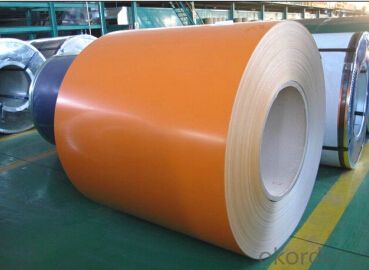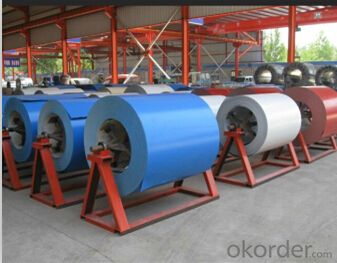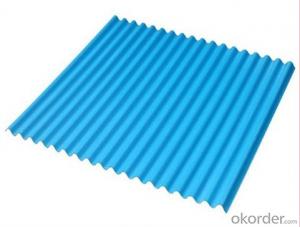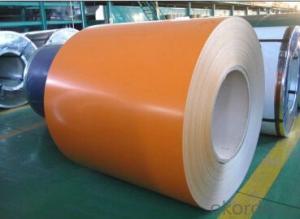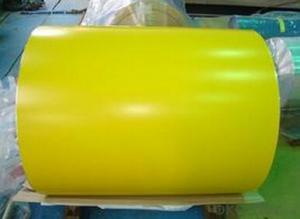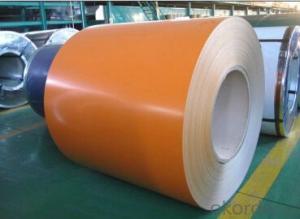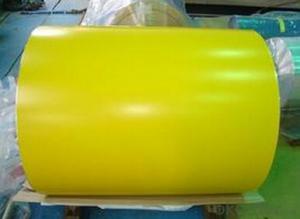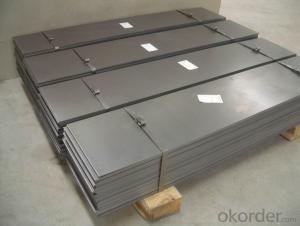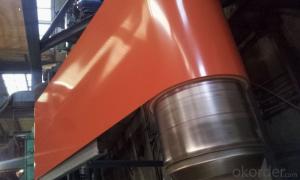Best Prepainted Galvanized Steel Coil ASTM 615
- Loading Port:
- Tianjin
- Payment Terms:
- TT or LC
- Min Order Qty:
- 25 m.t.
- Supply Capability:
- 5000 m.t./month
OKorder Service Pledge
OKorder Financial Service
You Might Also Like
1.Structure of Prepainted Galvanized steel Coil :
With Gi as base metal,after pretreatmet (degrease and chemical treatment) and liquid dope with several Layers of color,then after firing and cooling,finally the plate steel is called pre-painted galvanized steel ( PPGI) .Pre-painted galvanized steel is good capable of decoration ,molding,corrosion resistance
2.Main Features of Prepainted Galvanized steel Coil:
• Excellent process capability
• Smooth and flat surface
• Workability, durability
• Excellent heat resistance performance
• High strength
• Good formability
• Good visual effect
3.Prepainted Galvanized steel Coil Images
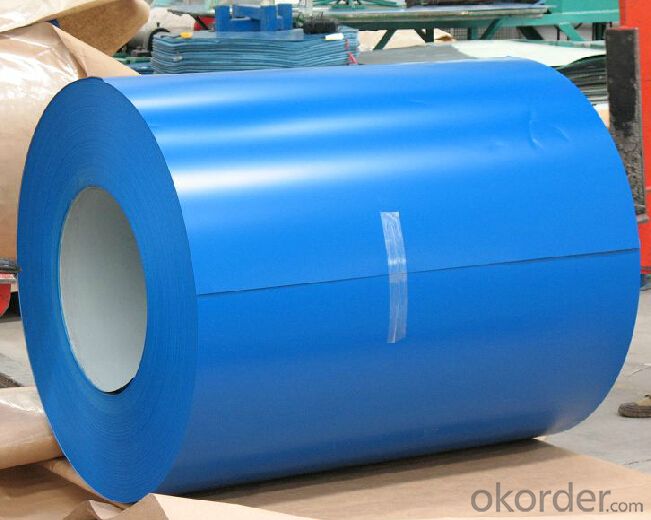
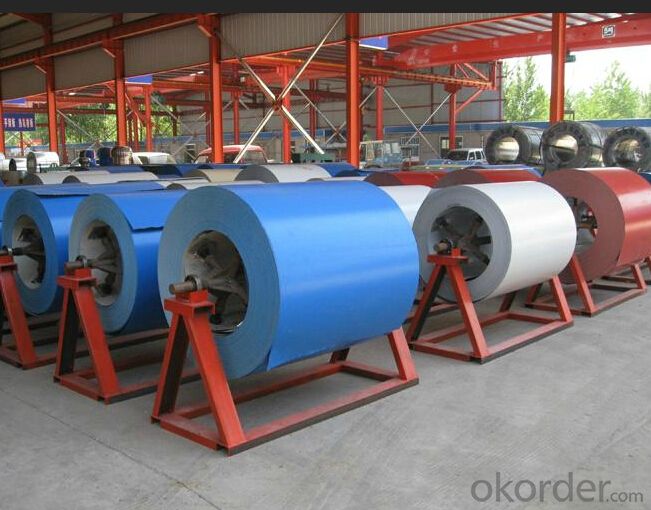
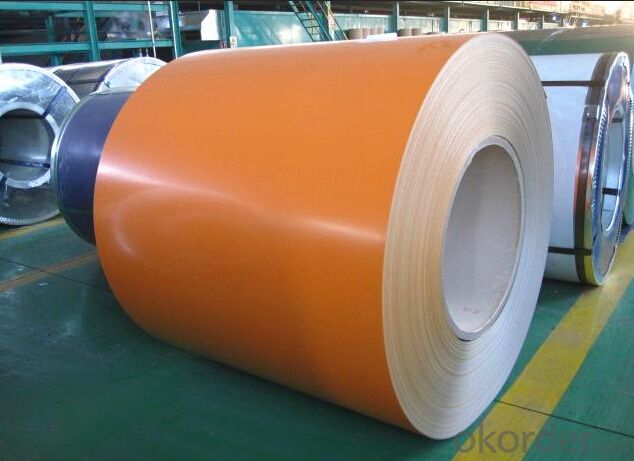
4.Prepainted Galvanized steel Coil Specification
Standard:ASTM, GB,JIS,JIS G3302 ASTM 755 EN10169
Grade: DX51D CGCC CS
Thickness: 0.13mm~3.0mm,
Width: 1250,600-1250mm
Coil weight:3-12 MT
Coil ID:508/610mm
Chemical composition:
C | Si | Mn | Cr | Ni | P | S |
0.150 | 0.476 | 11.231 | 12.50 | 0.900 | 0.039 | 0.010
|
5.FAQ of Prepainted Galvanized steel Coi
We have organized several common questions for our clients,may help you sincerely:
1.How do you control your quality
We have established the international advanced quality management system,every link from raw material to final product we have strict quality test;We resolutely put an end to unqualified products flowing into the market. At the same time, we will provide necessary follow-up service assurance.
2.how long we will receive the goods ?
After receiving your deposit or workable lc ,our normal shipment date is 15-20days,and it takes around 28 days to reach your port of destination. But is up to different destination
3. what is your moq
Normally our moq is 25per size ,but it is up to different size
- Q: How do steel strips contribute to reducing product weight in various applications?
- Steel strips contribute to reducing product weight in various applications by providing a lightweight alternative to solid steel components. Due to their thin and narrow form, steel strips can be used in place of thicker and bulkier steel materials, resulting in reduced overall weight without compromising strength or structural integrity. These strips are versatile and can be easily formed, shaped, or cut according to specific requirements, making them suitable for a wide range of applications such as automotive, aerospace, and construction industries. Additionally, steel strips are also highly corrosion-resistant, which further enhances their longevity and reliability in different environments.
- Q: What are the common sizes of steel strips?
- Common sizes of steel strips can vary depending on the specific application and industry. However, some standard sizes are commonly used in various industries. For example, in the automotive industry, steel strips are often available in sizes such as 0.5mm, 0.8mm, 1mm, and 1.2mm thicknesses, with widths ranging from 25mm to 150mm. These sizes are commonly used for manufacturing parts like brackets, clips, and reinforcements. In the construction industry, steel strips are commonly available in sizes such as 1.5mm, 2mm, and 3mm thicknesses, with widths ranging from 20mm to 150mm. These sizes are often used for applications like framing, support structures, and cladding. In general, steel strips can be found in various thicknesses ranging from 0.5mm to 5mm, and widths typically range from 10mm to 300mm. The specific size and dimensions required will depend on the intended use and industry standards.
- Q: How are steel strips used in the electrical industry?
- Steel strips are used in the electrical industry for various purposes, such as manufacturing electrical transformers, motors, and generators. They are often used as the core material in the construction of these devices to enhance their magnetic properties and improve efficiency. Additionally, steel strips are also utilized for grounding and shielding purposes in electrical systems to ensure safety and minimize electromagnetic interference.
- Q: What are the main factors affecting the fatigue strength of steel strips?
- The main factors affecting the fatigue strength of steel strips include the material composition and properties of the steel, the surface condition and quality of the strip, the presence of any manufacturing defects or stress concentrations, the applied load, and the frequency and duration of cyclic loading. Additionally, the temperature and environment in which the steel strips are used can also impact their fatigue strength.
- Q: How do steel strips contribute to energy savings in various applications?
- Steel strips contribute to energy savings in various applications by providing lightweight and durable materials that require less energy to produce, transport, and install. Their high strength-to-weight ratio allows for efficient use of resources and reduces the need for additional support structures. Moreover, steel strips have excellent thermal conductivity, enabling efficient heat transfer and insulation, which leads to energy savings in HVAC systems, electrical appliances, and automotive components. Additionally, steel strips are highly recyclable, reducing the energy required for manufacturing new materials and minimizing waste. Overall, steel strips play a significant role in promoting energy efficiency and sustainability across a wide range of applications.
- Q: Can steel strips be used in the production of beverage cans?
- Yes, steel strips can be used in the production of beverage cans. Steel strips are commonly used in the manufacturing process of beverage cans due to their strength, durability, and ability to maintain the quality and freshness of the contents inside.
- Q: How do steel strips perform in terms of heat resistance?
- Steel strips generally have good heat resistance. Steel is known for its high melting point, making it capable of withstanding high temperatures without deforming or losing its structural integrity. Additionally, steel strips can be further enhanced with heat-resistant coatings or alloys to improve their performance in extreme heat conditions. Overall, steel strips are a reliable choice when it comes to heat resistance.
- Q: 1 can thick galvanized steel square pipe burn welding?
- Better not to use electric welding, it is easy to burn through, even if burned well, deformation is very serious.
- Q: How are steel strips coated with paint or other finishes?
- Steel strips are typically coated with paint or other finishes through a process called coil coating. In this process, the steel strip is cleaned, pre-treated, primed, and then coated with paint or other finishes using a continuous automated line. The coating is applied evenly and precisely onto the strip's surface, ensuring a durable and aesthetically pleasing finish.
- Q: Can steel strips be used in the production of knives and blades?
- Yes, steel strips can be used in the production of knives and blades. Steel strips provide a strong and durable material that can be shaped and sharpened to create high-quality cutting tools.
Send your message to us
Best Prepainted Galvanized Steel Coil ASTM 615
- Loading Port:
- Tianjin
- Payment Terms:
- TT or LC
- Min Order Qty:
- 25 m.t.
- Supply Capability:
- 5000 m.t./month
OKorder Service Pledge
OKorder Financial Service
Similar products
Hot products
Hot Searches
Related keywords





